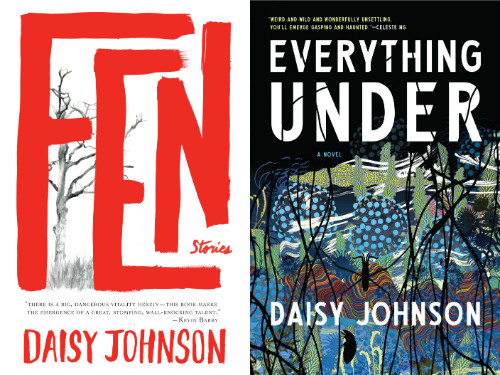
Daisy Johnson’s Fen emerged seemingly out of nowhere. Here was a collection of tales overflowing with ideas and emotion, but firmly rooted in the ground. They were delightful beasts, written with a panache that showed a masterly style, as raw as it could be delicate, which punched you in the gut while displaying an odd fragility. Fen was a worldly, earthy book, which at the same time left an aftertaste of fairy-tale and folklore. It introduced us to Johnson’s protagonists: strong, lonely women, trapped at the sources of myth, taking us closely, at times uncomfortably closely, into their world. We could almost feel as if we were catching eels ourselves, as if we trod those lonely East Anglian towns in our Saturday night high heels. We had always known of the darkness in these places; but we had known it out of the corner of our eyes, intuitively. Now Johnson showed us that we had been right all along; and we felt as if we had met a friend, someone who understood this often forgotten part of the world.
One of the many achievements of that collection was to be at once luminous and shady, to open a gap between two possible realities: that which binds us to the mundane, the physical world of grit and smell and touch and sensory awakening; and alongside that, those liminal edges we refuse to observe. Johnson’s skill lay in her way of forcing her readers to turn their gaze in that uncanny direction and take a peek, like the best speculative fiction does. Here was an author unafraid of rewriting our certainties, of showing us that all those things we think are solid—houses, places, families, language—are fragile constructs. Reality is nothing more than a thin idea we have created to feel warm, to feel safe. Johnson’s characters are constantly trying to negotiate this boundary, the imagined line between solidity and dream, between the physicality of the world and something far more complex, far scarier as well.
Angela Carter wrote that myths were “extraordinary lies designed to make people unfree,” and suggested that her project consisted in dynamiting them. Everything Under, Johnson’s first novel, came into the world as another menagerie of fated renewals, this time moving from folklore into the retelling of myth. It is one step further into Johnson’s project, whose contours we can now start to make out: a way of thinking about the world, of retelling the world, bound to reveal the stinging fragility of these narratives, and the problems of letting ourselves be trapped by this short-hand communication. In a world of fake news—of post-truth—the rewriting of myth, and in particular its “dynamiting,” is almost a political act. In Everything Under it is language, which should act as a bridge, that fails and keeps failing, signaling the distortion of narratives. But such failure is subtly suggested, as this is another earthly book—we can smell the rotten food in the cupboard, and our bones ache with the wetness of canal mist—which at the same time shows ways in which the uncanny can insinuate itself into the apparent solidity of the world. Contrary sensations take over then: poignant, subtle, scary. For, is there anything scarier than losing the capacity to communicate with those we love, if we ever had it in the first place? When language goes, memory goes as well. And, if that goes, what about our identity? How can we hold to an idea of ourselves if where we come from, where we have been going, and how we got there, it is unclear?
I’ve been thinking about the trace of our memories, whether the trace stays the same or changes as we rewrite them over time. If they are stable as houses and cliffs or decay fast and are replaced, overlaid. Everything we remember is passed down, thought over, is never the way that it was in reality. It makes me fraught, restless.
This is a passage that could stand as a condensation of Johnson’s aesthetics, her themes and her process. Memories are perhaps the most unstable among unstable constructs. But there is more out there that we should worry about; and embracing change, transformation, could perhaps save us. There are many directions in which this novel moves away from the limitations of the myth it uses as a blueprint, and manages to touch millennial anxieties. Johnson’s characters effectively pull in two directions: they are trapped in narratives, places, memories or their absences; and, knowing this, they show a desire to change and move on, although these metamorphoses rarely leave them unscathed. It is moving how hard they try to escape the clutches of fate, of whatever it is that we ourselves invent in order to keep hold of reality. The world is complicated, reality is complicated, and our certainties are mere illusions. Everything Under, understatedly, conveys this powerful message, via a dazzling structure of edges and circles and liminalities that eventually explode in unison. And it is so real and so true and so terrible when it does. It gets you hard. These are fables, or myths, or narratives, redone for our times, forcing us to acknowledge what is out there, waiting.
***
Fen
by Daisy Johnson
Graywolf Press; 208 p.
Everything Under
by Daisy Johnson
Graywolf Press; 272 p.
Follow Vol. 1 Brooklyn on Twitter, Facebook, and sign up for our mailing list.
